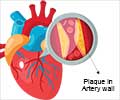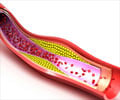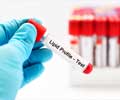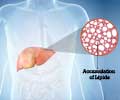Prescription omega-3 fatty acid drugs can effectively reduce triglyceride levels, and can be safely taken with statin drugs that reduce cholesterol levels.
Highlights:
- Prescription omega-3 fatty acid drugs can effectively reduce triglyceride levels, and can be safely taken with statin drugs that reduce cholesterol levels by 20-30%
- Raised triglyceride levels are becoming increasingly prevalent in the U.S. due to higher rates of obesity and diabetes
- Triglycerides are a form of fat found in the blood. Levels over 200 mg/dl can result in narrowing of blood vessels (atherosclerosis) and increases heart attack and stroke risk. Also, levels over 500 mg/dl can cause pancreatitis
The conclusions of this review appear in the American Heart Association journal Circulation.
Read More..
Findings of the Advisory Panel’s Review of Research on Elevated Triglycerides
- In persons with high triglycerides (200 to 499 mg/dL), prescription doses of omega-3 fatty acid drugs containing either EPA alone or EPA+DHA can lower triglyceride levels by 20 to 30%.
- There have been no studies comparing the efficacy of the two formulations in lowering triglyceride levels, i.e., EPA alone or a combination of EPA and DHA, and therefore, the advisory recommends that either formulation can be taken
- Contrary to current belief, formulations containing both EPA and DHA do not increase the "bad" form of cholesterol (LDL-C) in most persons with triglyceride levels between 200-499 mg/dL.
- However, if these drugs are taken by persons with very high triglyceride levels of 500 mg/dL or higher, LDL-C may increase
- Prescription omega-3 drugs are safe and effective in reducing triglyceride levels in patients who take statins for high blood cholesterol
- A recently conducted huge randomized placebo-controlled trial called REDUCE-IT, demonstrated that the EPA-only medication given together with statin medication resulted in a 25% reduction in major heart events such as stroke, heart attack and sudden death in persons with elevated triglyceride levels
- Raised triglyceride levels are becoming increasingly prevalent in the United States, due to higher rates of obesity and diabetes. Nearly a quarter of the US population have triglyceride levels over 150 mg/dl, which falls in the category of borderline high value
- It is also important to rule out and treat underlying conditions such as poorly controlled type 2 diabetes, obesity and hypothyroidism, which can cause elevated triglyceride levels before starting medication.
Report of AHA Science Advisory in 2017
A 2017 science advisory of the American Heart Association observed a lack of sufficient scientific research to support the use of omega-3 fatty acid prescription drugs to control high triglyceride levels in the general population.Before the latest advisory, the FDA had approved prescription omega-3 fatty acid medications only if triglyceride levels are very high above 500 mg/dL. The prescribed dose is 4 gm daily taken with food.
Lifestyle Measures to Lower Triglyceride Levels
- Regular exercise and physical activity
- Weight loss measures
- Avoid sugar and refined carbohydrates
- Regular consumption of fish (at least twice a week) such as salmon, herring, mackerel, and albacore tuna, a good source of omega-3 fatty acids
Reference:
- Omega-3 Fatty Acids for the Management of Hypertriglyceridemia: A Science Advisory From the American Heart Association - (https://www.ahajournals.org/doi/10.1161/CIR.0000000000000709)
Source-Medindia
















